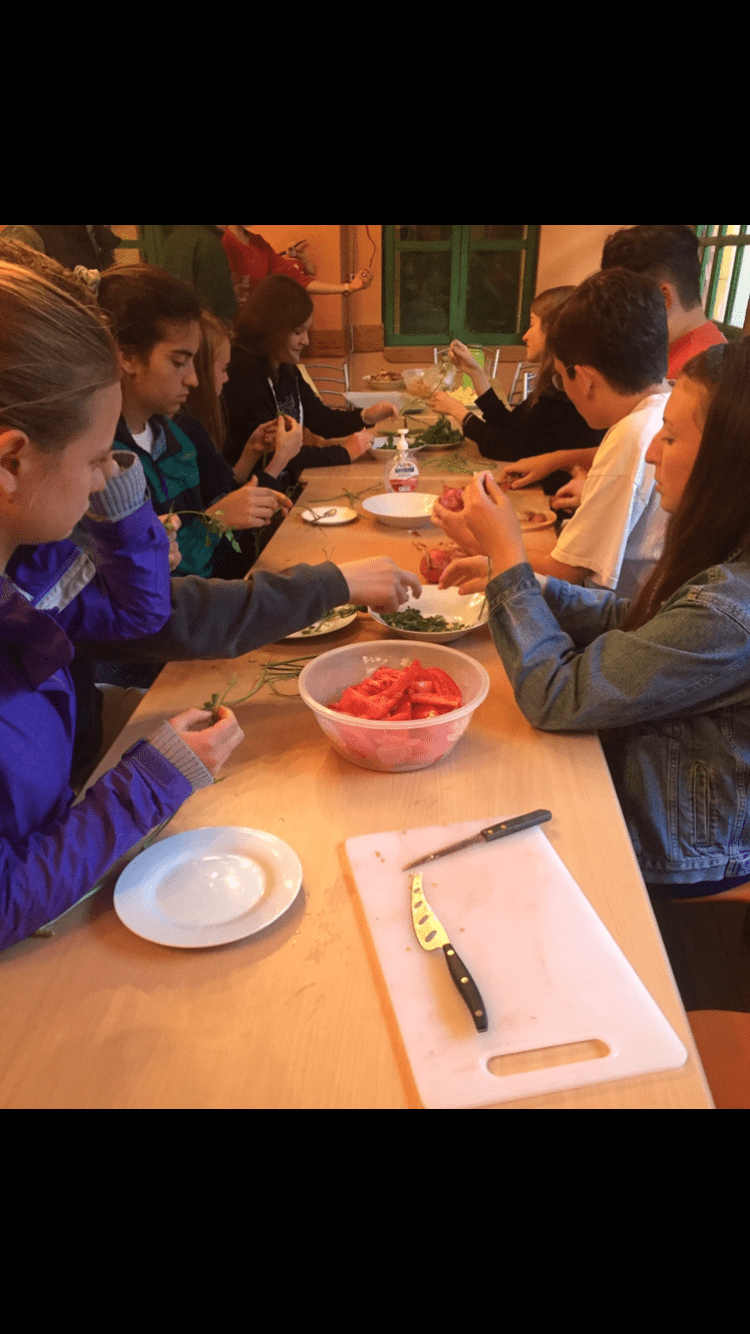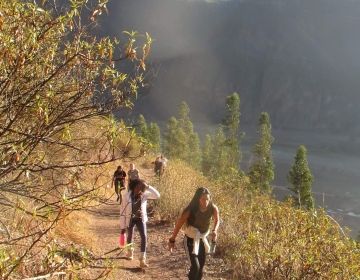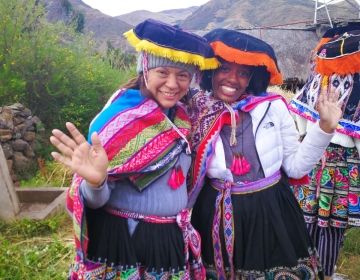A Day in the Life
Now that we are in the middle of the program, I feel that I have improved in more ways than one. After two weeks, I've shaken off the language dust and I feel that I am more fluent when I speak to my host family as well as with locals. I feel less limited to only using present, past, and imperfect tense when speaking. If I hear a word or phrase that I'm confused about, I make sure to incorporate it into my next conversation to make sure it "sticks." I'm so grateful to be in such a welcoming and kind-hearted host family who can help me achieve my language goals. If you saw my last post you saw that I have a host sister, Tirza, who is around my age. It's helpful to talk to a girl my age who is fluent in the language because although our cultures may be slightly different, we are teenagers after all. We have laugh, share our tastes in music and movies, and of course have some inside jokes. If there is something I don't understand or remember how to say, she is always willing to help.
Pisac Life
So how does living in Hughesville, PA compare to living in Pisac? There are some obvious differences, but there are some surprising similarities. Coming from a small town everybody knows everyone, the same occurs here. In my town people know the local grocer, restaurant owner, electrician, etc., while citizens here know each other by what and where they sell at the market. Most vendors here sell similar items from alpaca sweaters and blankets, to World Cup gear, trinkets, and jewelry. For example, you could buy a blanket at one stand for 50 soles, while at a different stall (if you're a good bargainer) your friend could get the same blanket for 30 soles plus socks and a trinket! (Inspired by a true happening). The community here is filled with a plethora of people with different backgrounds, sometimes you just have to search a little harder. In an art shop here, the man who masterfully constructs all of the paintings is deaf yet can read lips and speak Spanish. The women who ask tourists for pictures with their llamas and who wear traditional clothing grew up with a native lifestyle, they only know Quechua and barely any Spanish. The chef of Ulrike's, a favorite restaurant of tourists and CIEE students alike, apears to be an American who moved here to start his own restaurant. There are people from so many walks of life here, and probably more right underneath my nose. But what does life look like for me in Pisac, living as an American language student but trying to fit in like a local? To give you a better idea, here's a quick video of a typical day of a CIEE student in Pisac:
https://cieewebteam.wistia.com/medias/uimv0wv3z2
Learning the Culture
This weeks theme for classes was learning about the local culture. In classes we learned about Peruvian artists, musicians, movies, and types of Peruvian music. This all tied into how we could define "culture." One day Dalila, our teacher, put up quotes on the board by influential people on their definition of culture, then she asked us which one resonated with us the most. The one that I remember is by Mahatma Gandhi,
"A nation's culture resides in the hearts and in the soul of its people."
I simply defined culture as "how people live in different regions of the world, with traditions engrained into every aspect of their lives." We had the opportunity to experience some of the local culture ourselves by taking a cooking workshop to cook Lomo Saltado. As well as a music workshop where we learned to play two typical Andean instruments the Zampoña and the Quena.

In the upcoming week the theme of our classes is learning about social issues that are affecting Peru, and this Saturday we have another trip planned to Cusco!
Related Posts
¡Adios, Pisac!
It's hard to believe, but our month in Pisac has come to an end. Although in many ways it has flown by, we have experienced and learned so much that... keep reading

Getting to Know Huchuy Cusco
Our last weekend in Peru had to be something special, and our visit to Huchuy Qosqo ( quechua for “little Cusco”) was just that. This close-knit community about half an... keep reading

Visit to the Amaru Community
If you scroll through the photos or view some of the videos in this post, you will notice lots of color, smiles, laughter, and togetherness. However, no photos can do... keep reading
